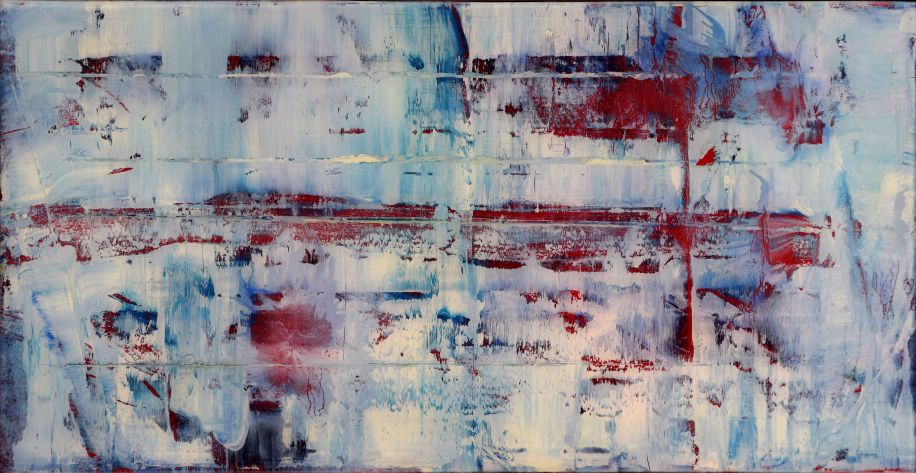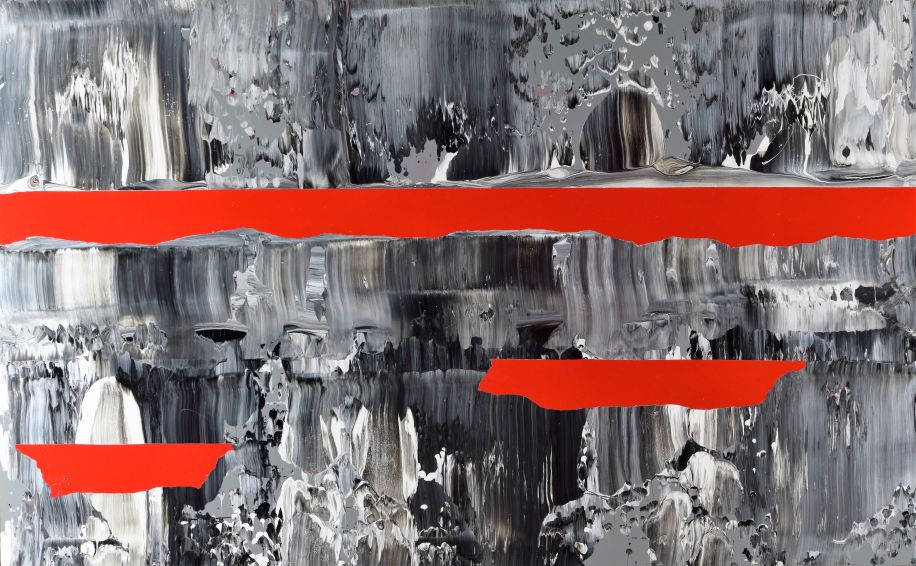By Dawn Gresko
Patrick Slagle’s passion hasn’t always been his legal profession: the recent attorney-turned-artist is making the switch to full-time artist after discovering his penchant for painting in a contemporary abstract style. Downtown Crowd caught up with the self-taught painter to talk technique and discuss the inspiration behind his work. While you’re likely to spot Patrick’s art along the walls of the new Arrow Salon in downtown, or in one of the many businesses in Gulf Breeze, you can always check out his work online at slaglesart.com.
Why the switch from attorney to full-time artist?
As much as I enjoy practicing law, I feel like I can hopefully accomplish something unique with my art. There are many innovators in the legal profession, but with art there is a less rigid framework in which expression may be accomplished. With art, the only limitation on your expression is your capacity for imagination. Plus, I find it hard to sit behind a desk all day!
You describe yourself as a self-taught artist. How did you become one?
I love to look at a piece and try to figure out how it was created. This leads me to tutorial videos, documentaries, and just plain experimentation. I have several boards that probably have 15 to 20 coats of paint, just from trying to replicate a certain technique I’ve seen. Once I have a general idea of how to approach a technique, the best way for me to refine it is to just keep doing, over and over.
Tell us a little about the materials and medium for your artwork.
Currently, I tend toward painting using traditional oils for some pieces, acrylics in others, but I really like the viscosity of oil-based enamel. Most of my work this year has been done on birch panels, however I still do some work on stretched canvas. Additionally, I’ve been adding a layer of resin as a finish; it provides a gloss finish, but also acts a lens and eliminates reflection from different heights of paint buildup, smoothing perceived harshness. I also put a border around most of my pieces, usually planed and stained pine. I use an American walnut stain, which gives the overall impression of mid-century furniture. I like the juxtaposition of contemporary abstract work with mid-century borders. It adds a cool touch, but doesn’t distract from the piece.
Who do you look to for inspiration?
I’m a huge fan of Gerhard Richter. From his constructionist work to photorealism to the abstracts that have really defined his career, I love it all. I also enjoy the work of Rothko. His ability to make the viewer feel depth in an abstract work is amazing. His floating squares have been a motivator for me in that I continually try to replicate the sense of depth that objects, which are apparently floating, inspire.
Guide us through your creative process, taking us from your initial idea for a piece to how you bring that concept to life.
Every piece starts out as an idea from any number of sources; it could be anything, but generally it relates to a perception of depth and visual complexity. Then I research, basically I want to contribute or combine different elements of disparate ideas to produce something fresh. Next, I determine what sense of scale will help express my idea. Some ideas lend themselves to smaller pieces, but most of my work tends to larger areas. I’ll generally do a smaller version before moving to the bigger sizes. This helps me work out composition as well as fine tune color. Once I’ve worked out a size, I build a frame. Since I build the frames myself, I can be very flexible on the dimensions for the piece. Then I stretch a canvas, or glue and nail a board. Since I’ve been working with resin lately, most big pieces have been on birch board. I sand it down to a 220 grit fineness. Then, canvas or board, the surface is primed with several coats of primer. Once dry, I sand it down again, in order to knock down any uneven buildup of primer. When the surface is prepared, I get to paint! After the paint is dry, most pieces are coated in an epoxy resin. Epoxy is poured on in several different stages, the process taking about two days. Finally, I measure and create borders. This involves cutting, planing, staining, attaching, sanding, filling nail holes, and re-staining the wood border. After all of this, a piece is ready for delivery or show.

